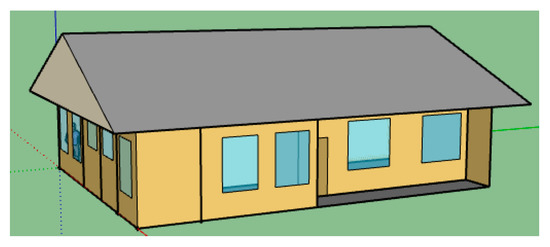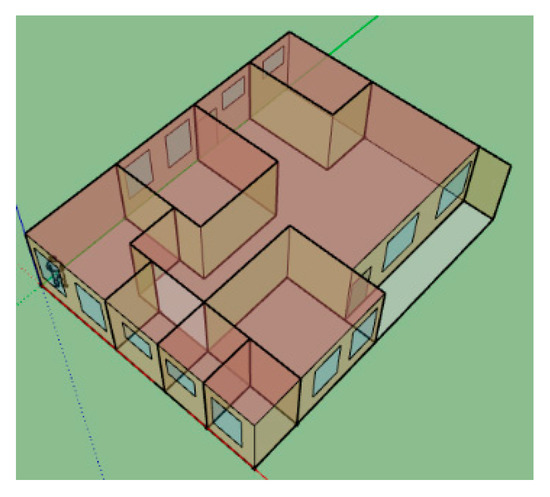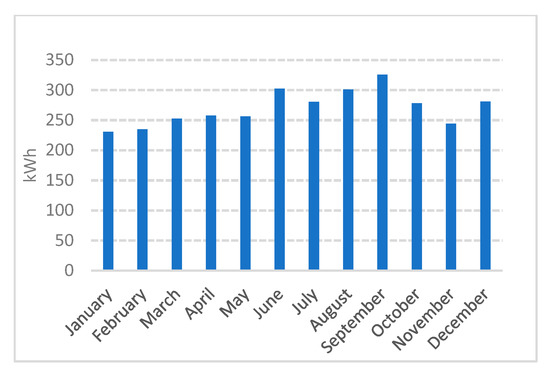Abstract
The climate is changing very fast today, and this is not natural. We are experiencing the impact of climate change in many aspects. It is also expected to impact the performance of buildings badly in due course of time. In recent years, many countries started investing to evaluate the energy performances of the buildings and opting for the best suited energy-saving measures. However, this concept may be new in the context of Bhutan. However, the author expects that this new concept may revolutionize the building construction sectors in Bhutan. Many studies show that buildings are one of the world’s largest consumers of energy, and on the other hand, strategies are available to reduce energy consumption. The strategies can be applied right from the design phases for the new buildings and retrofits for the old buildings. In order to apply the best strategies of energy consumption reduction and to understand building energy consumption patterns, an evaluation of the building’s energy performance needs to be carried out.
1. Introduction
Bhutan is a small country located between two giant countries, China to the North and India to the East, South and West. With the rapid economic growth in recent years, the living standards of people in Bhutan also keep increasing. The higher standards of living have resulted in a significant increase in energy consumption from the residential sector, and this trend is expected to continue into the future. Many new buildings being constructed in this era do not perform well as they could be with today’s technology in energy efficiency.
The building sector contributes to 42% of the total energy consumption [1]. Bhutan’s population is 62.2% rural and 37.8% urban, and 100% of households in the country have access to electricity. Electricity is the main source of energy next to fuel wood. Electricity is solely produced from hydropower plants, and as of now, no fossil fuel power plant no fossil fuel-generating power station exists in Bhutan. Energy consumption in the building sector amounts to 270,356 TOE in 2014 with the residential segment consuming 213,422 TOE of energy and the commercial and institutional segment consuming 56,934 TOE of energy. While thermal energy consumption in buildings stands at 242,916 TOE, the electrical energy consumption is 27,440 TOE for the year 2014 [1].
2. Location and Climatic Conditions
Dewathang is a small town located in the Samdrup Jongkhar district with GPS coordinates of 26.8541° N, 91.4580° E at an altitude of 1000 m above the msl. The temperature varies from 15 °C to 34 °C, with a hot, humid climate, and it falls under the subtropical climatic zone [2]. The location’s climatic information is shown in Table 1.

Table 1.
Climatic information of Dewathang.
3. Model Building Descriptions
The building used as a model for the energy simulation is located inside the Jigme Namgyel Engineering college campus under the Dewathang municipality. It is a single-story residential building with the floor area of 130 m2 and floor-to-roof height of 3.5 m. The indoor layout is as follows: three bed rooms, one living room, one kitchen, one study room and two toilets, as shown in the Figure 1 and Figure 2.

Figure 1.
Model building.

Figure 2.
Internal layout.
The building has a fairly standard construction with light-weight 100–150 mm concrete floor slabs and is enclosed by burnt clay brick walls of 250 mm. All the wall surfaces are plastered on both sides. The internal partition is erected with a brick wall of 125 mm. The building is a frame structure with reinforced concrete beams and columns. Four-millimeter single clear glass is used for all of the windows. No mechanical equipment was found in the building except for an electrical fan for cooling.
4. Results and Discussion
The results obtained from the simulation are presented in the subsequent sections.
4.1. Simulation Result of the Existing Building
From the simulation result shown in Figure 3, the maximum energy required for cooling is 1047.87 kWh in the month of August, whereas a minimum of 2.47 kWh is used in the month of January. For heating, the maximum energy required is 961.62 kWh in the month of January and zero during the summer months. The simulation is carried out based on the existing model building conditions only.

Figure 3.
Cooling and heating energy demand.
The main supply of energy to the building is only electricity, and Figure 4 shows the monthly electricity bill. The maximum electrical energy consumed is 325.67 kWh, and the minimum is 230.67 kWh.

Figure 4.
Electricity bill.
4.2. Performance Evaluation
The simulation result shows that there is a possibility to reduce the energy required by the building for cooling from 10–19 kWh by adopting a few energy-saving measures, such as fixed window, window wall ratio, double glazing and overhang shading window. The maximum energy saving can be achieved by having overhang shading in the Dewathang location.
5. Conclusions
Globally, residential sectors are characterized by the highest consumption. Though the contribution from rural communities on the total energy consumption may not be noticeable. This research also spins over the building energy modeling and energy consumption in a rural area. Therefore, from this research, the way forward is that there should be a policy for adopting energy-saving measures in rural communities. Since rural communities will have distinctions in their energy use, economic drivers and demographics. For Bhutan, it is on time to deliver high-quality efficiency programs to rural people as energy-saving measures. As a finding from this research, there is a huge scope for reducing energy consumption in rural communities by adopting simple energy-saving measures. With the addition of simple energy-saving measures, the construction cost will not scale up, but the measures will definitely save energy consumption as well as improve the living thermal comfort and may enjoy benefits from energy-saving in the long run.
Acknowledgments
The author would like to extend gratitude to Bialystok University of Technology, Poland, for providing funds to participate in the X International Scientific Conference.
Conflicts of Interest
The author declares no conflict of interest.
References
- Department of Energy, Bhutan. Overview of Energy Policies of Bhutan; Department of Energy: Thimphu, Bhutan, 2009.
- Department of Renewable Energy, MoEA. Bhutan Building Eenergy Efficiency Study; Ministry of Economic Affairs: Thimphu, Bhutan, 2015.
Publisher’s Note: MDPI stays neutral with regard to jurisdictional claims in published maps and institutional affiliations. |
© 2021 by the author. Licensee MDPI, Basel, Switzerland. This article is an open access article distributed under the terms and conditions of the Creative Commons Attribution (CC BY) license (https://creativecommons.org/licenses/by/4.0/).